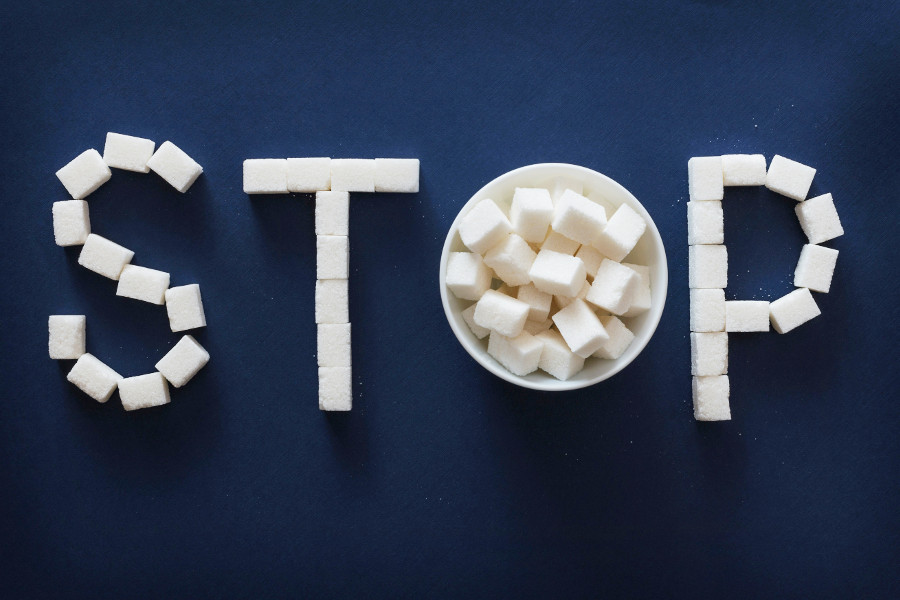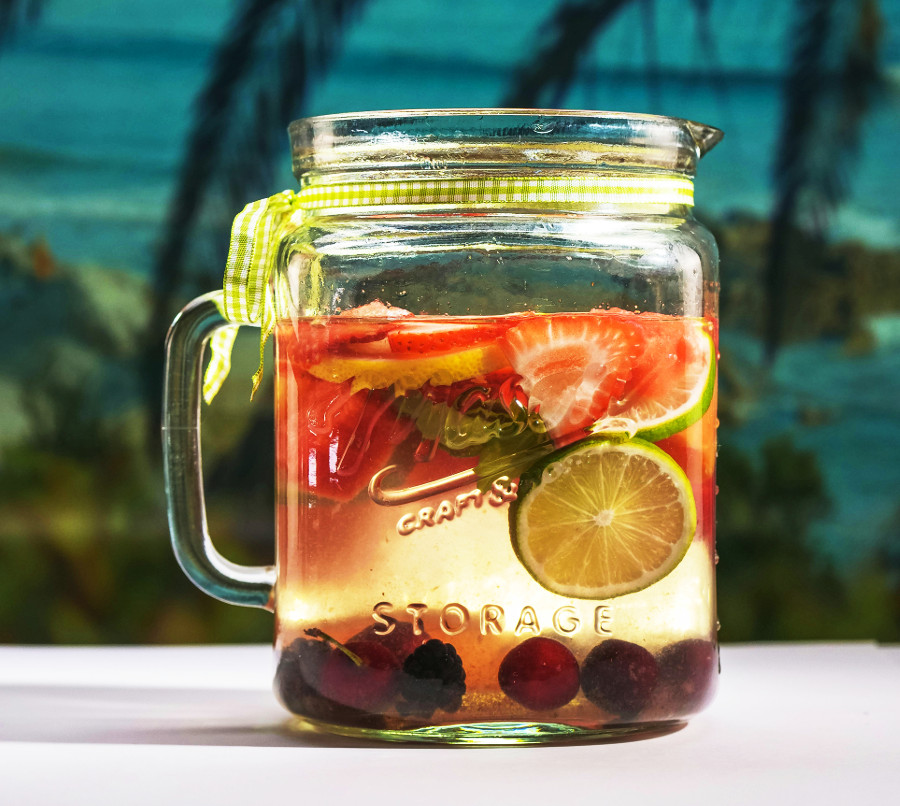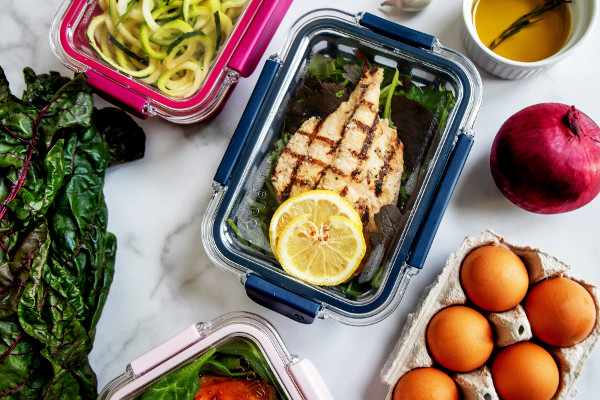Improve Your Life: The Ultimate Guide to a 30-Day Sugar Detox
In today’s world, sugar is everywhere. It's tucked into our morning coffee, hiding in our snacks, and even sneaking into what we thought were healthy meals. You might think you’re in control of it, but sugar can be a sneaky culprit in modern diets, and it’s not doing you any favors. If you’re feeling sluggish, dealing with mood swings, or noticing your energy levels crash mid-afternoon, then maybe it’s time to hit the reset button. A 30-day sugar detox might just be the thing you need to break free from the sugary grip and give your body the reboot it deserves.

We live in an age where processed food is everywhere. It’s so easy to grab something sugary on the go, especially when we’re busy and stressed. But if you’re constantly reaching for that sweet pick-me-up, you might be setting yourself up for a whole host of health problems. From weight gain to chronic diseases, sugar can take a toll. But a simple 30-day detox can change the game.
Let’s dive into why this detox can make a real difference for your health.
1. Health Dangers of Sugar Consumption
It’s no secret that too much sugar isn’t good for you, but do we really understand the damage it can cause? It’s more than just weight gain - it’s about how sugar impacts nearly every system in your body.
Type 2 Diabetes
Sugar is a major player in the rise of Type 2 diabetes. When you eat sugar, your blood sugar spikes, prompting your body to pump out insulin. Over time, your cells start ignoring insulin’s signals, which leads to insulin resistance and eventually, diabetes. It’s a vicious cycle, but with a sugar detox, you can break it.
Obesity
You might not realize it, but sugar is a leading cause of weight gain. It stimulates hunger and increases fat storage, especially around the belly. It also hijacks your hormones that regulate hunger and satiety, making it easy to overeat and tough to stop.
Metabolic Syndrome
This isn’t just one condition - it’s a cluster of issues, including high blood pressure, high cholesterol, and insulin resistance. And guess what? Sugar is a major contributor. It fuels metabolic syndrome, which can lead to heart disease, stroke, and Type 2 diabetes.
Autoimmune Illnesses
Sugar stirs up inflammation in your body, which can lead to autoimmune diseases. Chronic inflammation can throw your immune system off balance, causing it to attack your own body - something that’s not so great for your health.
Cancer
New research is shedding light on sugar’s role in cancer development. It helps cancer cells grow faster by promoting insulin resistance and creating a high-sugar environment in your body. It’s not just the obvious cancers either - sugar’s impact on inflammation can contribute to the development of many types of cancer.
Alzheimer’s and Dementia
There’s growing evidence that sugar is a factor in cognitive decline. It may increase your risk of Alzheimer’s by spiking insulin levels in the brain, leading to inflammation and oxidative stress that damages brain cells. And over time, this can affect memory, mood, and mental clarity.

Systemic Inflammation
Sugar is one of the biggest culprits when it comes to causing chronic inflammation in the body. Inflammation doesn’t just hurt you in the short term - it can lead to long-term health issues, like heart disease and arthritis.
Depression and Mood Swings
Eating sugar messes with your mood. High sugar intake leads to blood sugar spikes and crashes, which can cause anxiety, irritability, and depression. When you reduce sugar, you give your body a better chance to regulate mood and hormones.
Reduced Cognitive Skills
Sugar’s negative effects don’t stop at your mood. It also impacts your brain. Studies have found that diets high in sugar can reduce your ability to think clearly, affect your memory, and lower your cognitive skills. With a sugar detox, your brain can reset.
Leaky Gut and Gut Imbalance
Sugar is one of the worst offenders when it comes to gut health. It feeds the bad bacteria in your gut, leading to imbalances in your microbiome. Over time, this can result in leaky gut, where harmful substances leak into your bloodstream and cause widespread inflammation.
2. The Problem of High-Glycemic Index Foods
When you think about sugar, it's not just the obvious candy and desserts - it’s also in many high-glycemic foods that rapidly raise your blood sugar.
What is the Glycemic Index (GI)?
The Glycemic Index is a measure of how quickly foods raise your blood sugar after eating. Foods with a high GI (like white bread, pasta, and sugary cereals) cause your blood sugar to spike and then drop, which can lead to energy crashes and cravings for more sugar.
How High-GI Foods Affect Your Insulin and Blood Sugar
These foods hit your system fast. Your body releases a flood of insulin to try to bring your blood sugar down, but over time, it becomes less effective. This leads to insulin resistance, a condition where your body can’t manage sugar properly - setting the stage for Type 2 diabetes and other health issues.
Examples of High-GI Foods
Refined grains, white rice, sugary drinks, and sweets are just a few examples of foods with a high glycemic index. They quickly turn into sugar in your bloodstream, making it harder to maintain stable energy levels.
How to Lower GI
Luckily, you can balance your blood sugar by choosing foods with a lower glycemic index. Whole grains, vegetables, legumes, and berries have a much gentler effect on your blood sugar. Pairing high-GI foods with protein or healthy fats also helps slow down the sugar absorption.
3. Sugar Alternatives in Popular Diets (Paleo, SCD, GAPS, Keto)
Cutting out sugar doesn’t mean you have to miss out on sweet flavors. There are plenty of alternatives, especially if you’re following specific diets like Paleo, Keto, or SCD.
Paleo Diet
The Paleo diet focuses on whole foods, and while sugar is off the table, you can still enjoy natural sweeteners like honey or maple syrup in moderation. It’s about going back to what our ancestors ate, avoiding anything that’s processed.
SCD (Specific Carbohydrate Diet)
The SCD eliminates grains, refined sugar, and most dairy, focusing instead on gut-healing foods. It allows honey and certain fruits as sweeteners, which helps nourish your digestive system and regulate your blood sugar.
GAPS Diet
The GAPS diet is all about healing the gut, and it restricts sugars that harm gut flora. It allows small amounts of honey and fruit to satisfy cravings while healing the digestive system. It’s a great way to get your gut back on track.
Keto Diet
Keto is a low-carb, high-fat diet, and if you want to avoid sugar, there are plenty of keto-friendly sweeteners. Think stevia, monk fruit, and erythritol. These sweeteners won’t spike your blood sugar or throw you out of ketosis.
Other Sugar Alternatives
Stevia, monk fruit, and erythritol are some of the most popular sugar substitutes. They provide sweetness without the blood sugar crash, making them perfect for anyone trying to cut out sugar but still enjoy a little sweetness.

4. Tips for Successfully Completing a 30-Day Sugar Detox
Embarking on a 30-day sugar detox can feel like a challenge, but with a few simple strategies, you’ll be able to tackle it head-on.
Clear Your Space
To make this detox easier, start by clearing out all sugary foods from your home. Stock up on healthy snacks and ingredients for sugar-free meals so you’re always prepared.
Meal Planning is Key
Planning ahead is a game-changer. Prep your meals and snacks in advance to make sure you’re never caught off guard by a sugar craving. It also takes the stress out of figuring out what to eat on the fly.
Manage Cravings
Sugar cravings are real, but they’re manageable. Reach for healthy fats (like avocado or nuts) when you’re feeling hungry. Staying hydrated also helps curb cravings, so drink lots of water and herbal teas.
Support System
If you’ve got a support system - whether it’s friends, family, or a group - your chances of success skyrocket. Share your goals and check in with each other for motivation.
Gradual Reduction or Cold Turkey?
Some people find it easier to wean off sugar slowly, while others dive right in. Choose whichever approach works for you, but make sure you stay committed.
Track Your Progress
Keep a journal to track how you’re feeling throughout the detox. Write down any changes in your energy, mood, or physical appearance. It’ll keep you motivated when the going gets tough.
Join a Supporting Community
The best way to keep your motivation when it comes to lifestyle changes is to find like-minded buddies who support you on your way. Check out the online community SugarFree to find new tips and exchange ideas.
5. Benefits of a Sugar Detox
The benefits of a 30-day sugar detox go beyond just losing weight. Here’s what you can expect:
Balanced Blood Sugar
By cutting sugar out, you’ll stabilize your blood sugar, which leads to fewer energy crashes and reduced risk of diabetes.
Weight Loss
Sugar is a major culprit in weight gain. When you cut it out, you’re likely to see a drop in weight as your body burns fat more effectively.
Reduced Inflammation
Less sugar means less inflammation in the body, which can help prevent chronic diseases like heart disease, arthritis, and even certain cancers.
Better Digestion
With a reset on your diet, your gut health can improve, reducing bloating and boosting digestion.
Clearer Skin
Many people notice their skin clears up after cutting out sugar. Acne, redness, and puffiness can all be linked to sugar consumption.
Improved Mental Clarity
With stabilized blood sugar, you’ll notice better focus and a clearer mind, reducing brain fog and enhancing cognitive function.
Conclusion
A 30-day sugar detox isn’t just about cutting out sugar - it’s about giving your body the chance to reset, heal, and thrive. By removing sugar from your diet, you’ll experience better health, improved energy, and a greater sense of well-being. While it may seem challenging at first, the benefits of a sugar detox make it well worth the effort. So, are you ready to make the change and feel the difference for yourself?



